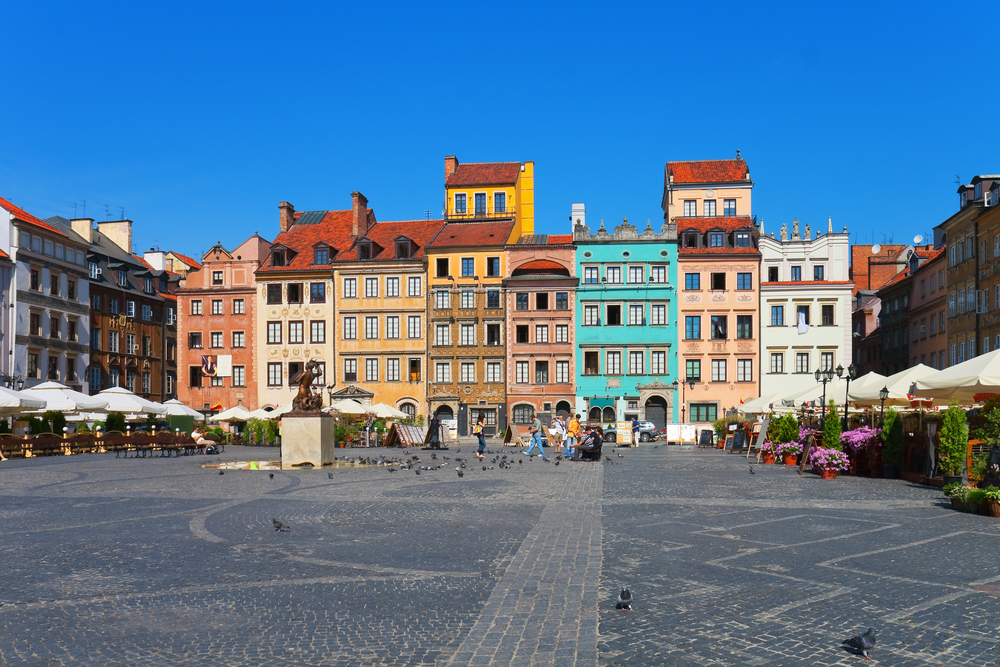Visitors to Warsaw will find one of the most alluring aspects of the city is its mixture of the old and new. There are plenty of high-rise buildings and modern steel-and-glass constructions around, showing how the city has developed since the end of the Cold War, while the city had to be almost completely rebuilt after the second world war left Warsaw in ruins. Despite this, not all of Warsaw was rebuilt according to the fashions of postwar architecture.
Instead, the Old Town Market Square was faithfully reconstructed in a way that restored the appearance it had before the war. Parts of it had dated from the 1th century and the dominant feature had been the townhouses from the 17th and 18th centuries. As a result, any visitor to the square today might be forgiven for imagining that this part of the Polish capital had somehow been spared the ravages of war, as if somehow magically shielded by the mermaid statue in the centre of the cobbled square. This icon is a symbol of Warsaw and said to be its protector, but in the end it was restoration, not protection, that has given us the square as it is today.
UNESCO has recognised the care with which this was done by declaring the square a World Heritage site. Chief among the attractions in the square that one should visit is the Historic Museum of the Capital City of Warsaw. As well as charting the life and times of the city as a whole down the centuries, it provides an informative but shocking insight into the destruction and reconstruction of the square.The museum is located at the northern end of the square.
Elsewhere, there are charming shops and pavement cafes, with the latter providing Warsaw with its most vibrant expressions of cafe culture. Warsaw’s Old Town Square is easily reached from the city centre hotels, with the nearby Stare Miasto tram stop being served by four different lines.









